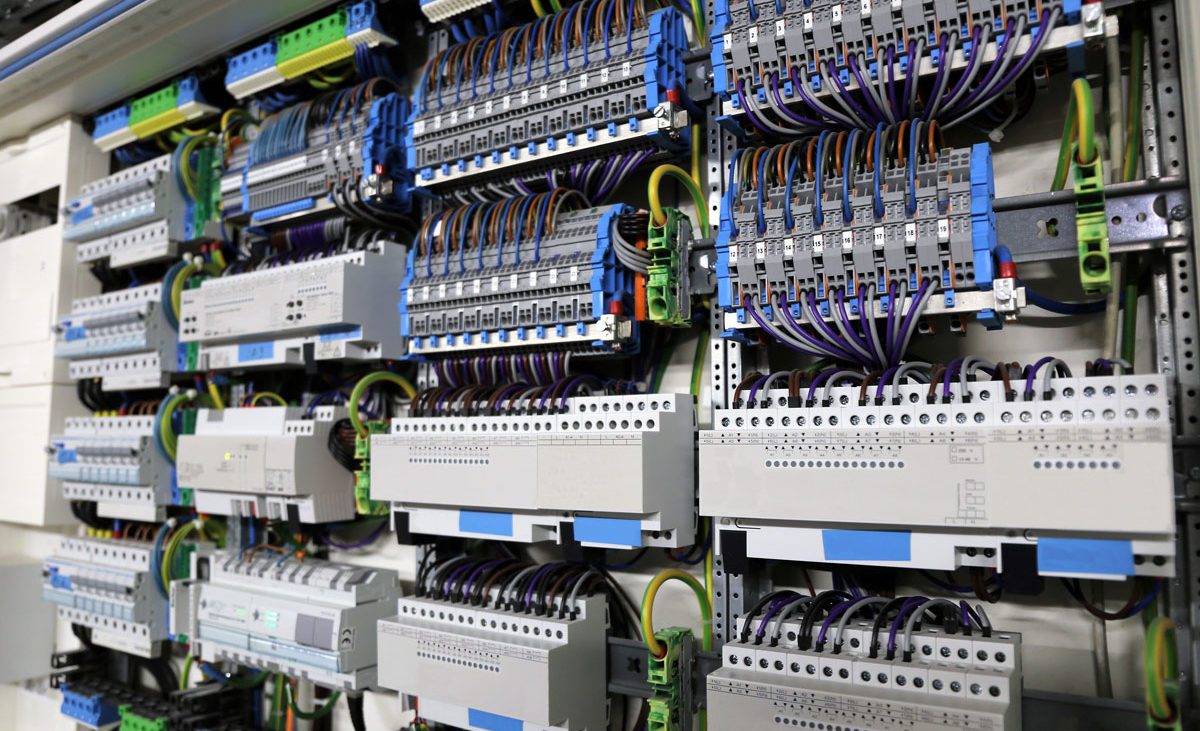Improving Industrial Electrical Design for Complex Operations
Improving Industrial Electrical Design for Complex Operations
Blog Article
Cutting-edge Electric Design Solutions for Modern Facilities
As metropolitan atmospheres grow progressively intricate, incorporating innovations such as clever grids and eco-friendly power sources becomes vital. These improvements not just assure to optimize power consumption but also foster strength versus future needs.
Relevance of Innovative Electrical Design
Innovative electrical design plays a crucial role in modern-day infrastructure, affecting not only efficiency yet also sustainability. As cities advance and the need for energy rises, the need for sophisticated electric systems becomes paramount. These systems have to not only fulfill current demands yet also expect future development and technical improvements.
A well-executed electric design can dramatically reduce power usage, thus lowering functional prices and decreasing environmental influence. By including renewable resource resources, such as photovoltaic panels and wind generators, ingenious layouts can boost energy independence and strength. In addition, clever grid innovations enable real-time surveillance and management of power circulation, maximizing performance and minimizing waste.
Safety and security is an additional vital facet of electric design. Implementing sophisticated technologies and strenuous criteria can reduce risks connected with electrical failures, guaranteeing a safe setting for organizations and residents alike. Additionally, ingenious layouts promote adaptability, permitting facilities to integrate emerging technologies seamlessly.
Key Fads in Electrical Design
As the landscape of electric design continues to advance, numerous crucial trends are shaping the future of the sector. One significant trend is the assimilation of wise technology right into electric systems. The proliferation of the Net of Things (IoT) has actually allowed real-time tracking and control of electric gadgets, boosting effectiveness and promoting anticipating upkeep.
One more fad is the expanding emphasis on modular design. This approach enables for adaptable and scalable options, enabling framework to adjust to transforming demands without comprehensive improvements. Additionally, using advanced simulation devices and Structure Information Modeling (BIM) is coming to be increasingly prevalent, enhancing the design procedure and enhancing cooperation amongst stakeholders.
In addition, advancements in products science are causing the growth of lighter, extra resilient, and energy-efficient components. This development is particularly vital for high-performance structures and facilities tasks.
Finally, there is a marked change in the direction of data-driven decision-making - electrical load calculation. Leveraging data analytics helps designers optimize systems for efficiency and cost-effectiveness. With each other, these patterns symbolize a transformative period in electrical design, enhancing performance, sustainability, and strength in contemporary infrastructure
Lasting Power Solutions
Sustainable energy solutions are progressively becoming a critical focus in electric design, mirroring a more comprehensive commitment to ecological responsibility and resource effectiveness. These remedies intend to lessen ecological influence while maximizing power intake in numerous frameworks, from domestic buildings to large industrial facilities.
Among the leading techniques involves the combination of sustainable energy resources, such as solar panels and wind turbines, right into electric systems. This not only reduces dependency on fossil gas but also enhances energy durability. Furthermore, ingenious energy storage space systems, such as advanced batteries, enable efficient management and circulation of energy, ensuring that excess power produced throughout top production explanation can be used throughout high demand durations.
Furthermore, energy-efficient design practices are being embraced to boost overall system performance. This consists of utilizing energy-efficient illumination, HVAC systems, and wise structure technologies that adapt and keep track of power usage based upon occupancy and ecological problems.
Smart Grid Technologies
The implementation of lasting energy solutions naturally results in the exploration of smart grid innovations, which play a crucial duty in improving electrical systems. Smart grids utilize progressed communication innovations and information analytics to improve the reliability, performance, and sustainability of electrical energy circulation. By integrating electronic technology with conventional grid infrastructure, these systems assist in real-time monitoring, automated control, and improved decision-making capacities.
Among the essential attributes of wise grids is their capability to suit renewable resource sources, such as solar and wind power. This versatility not only reduces reliance on fossil gas however also permits a more decentralized power production version. Additionally, clever grids make it possible for need reaction programs, where customers can change their energy usage based upon real-time pricing, thereby promoting power preservation and decreasing peak tons demands.
Additionally, clever grid innovations enhance grid resilience by enabling quicker identification and resolution of blackouts, ultimately minimizing downtime. With anticipating upkeep and analytics, energies can enhance procedures and boost solution shipment. As neighborhoods and cities remain to evolve, clever grid innovations are vital for developing a lasting and reliable electrical infrastructure that meets the demands of modern-day society.

Future-Proofing Facilities
To make sure long-lasting feasibility and adaptability, future-proofing framework is important in the rapidly evolving landscape of electric design services. As technology developments and energy needs change, it is important that electrical systems are created with flexibility in mind. This requires including scalable solutions that can accommodate future upgrades without requiring substantial overhauls.

In addition, sustainability should be a keystone of future-proofed layouts. Utilizing renewable energy sources, such as solar and wind, and optimizing power efficiency minimize reliance on fossil fuels, aligning with worldwide initiatives to battle environment adjustment.
Conclusion
By focusing on adaptability, sustainability, and performance, these services address the evolving demands of energy systems. The assimilation of clever grid modern technologies and sustainable power options enhances strength and decreases operational costs.
A well-executed electric design can dramatically decrease energy usage, consequently reducing operational costs and decreasing ecological influence. By incorporating renewable power resources, such as solar panels and wind generators, ingenious styles can improve power freedom and durability. Additionally, innovative power storage space systems, such as innovative batteries, enable efficient monitoring and distribution of energy, making sure that surplus energy created throughout top manufacturing can be used during high need durations.
Wise grids allow need feedback programs, where customers can adjust their power usage based on real-time prices, thereby promoting energy preservation and reducing peak lots needs. (electrical engineering design services)
As innovation breakthroughs and energy needs shift, it is important that electric systems are made with adaptability in mind.
Report this page